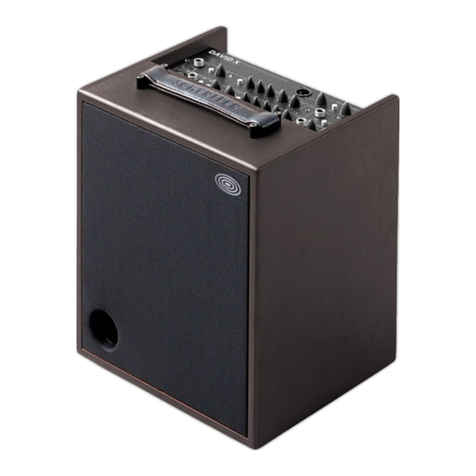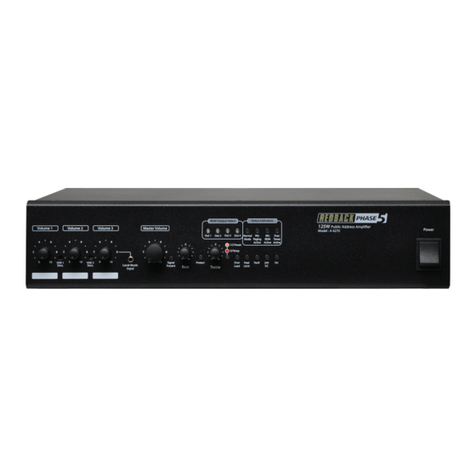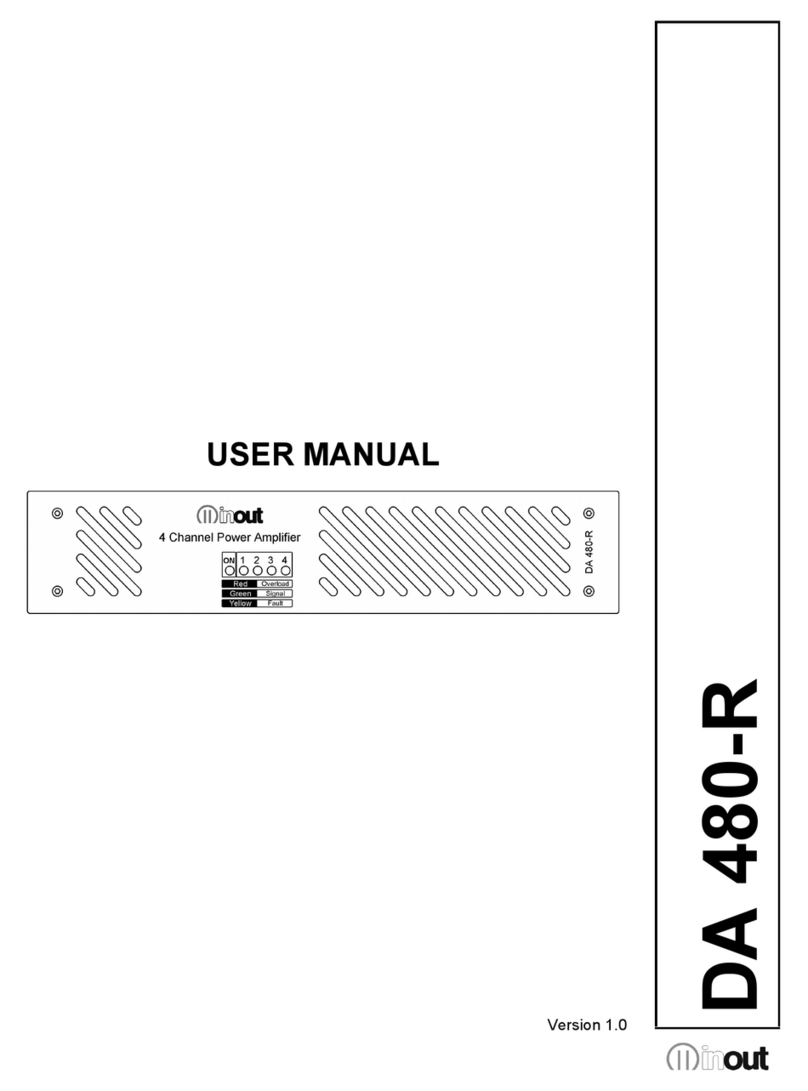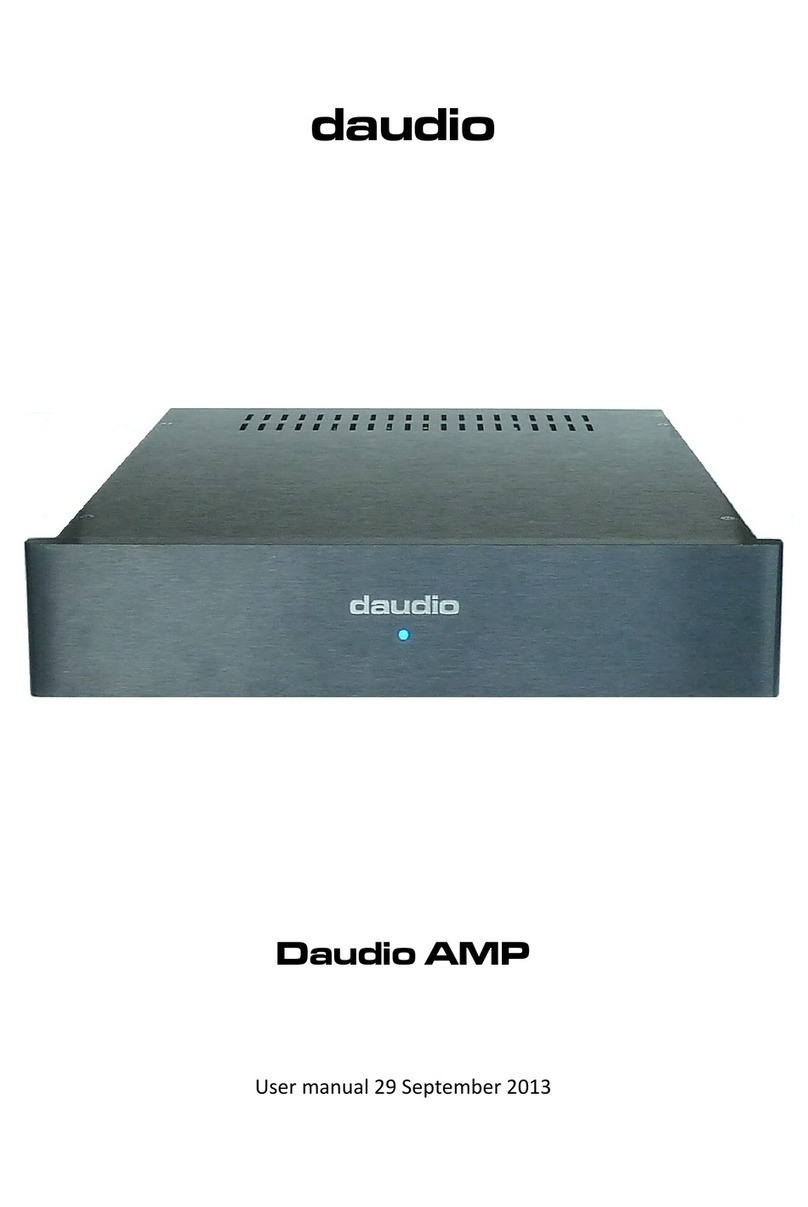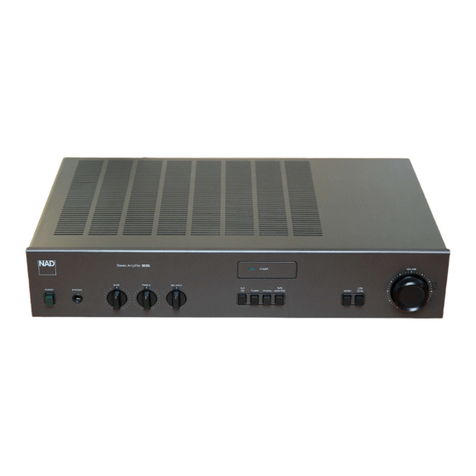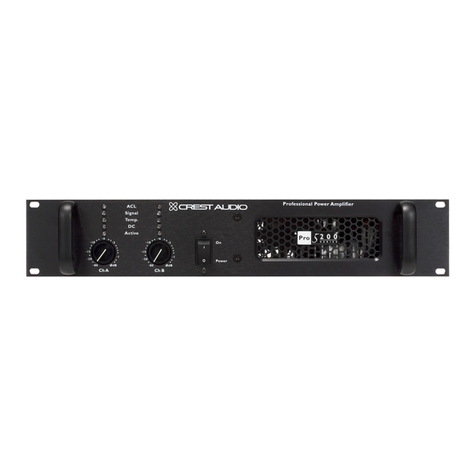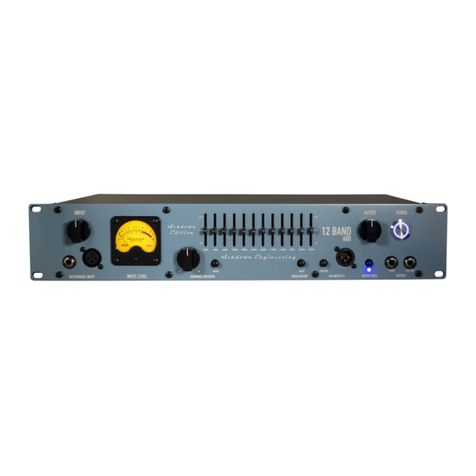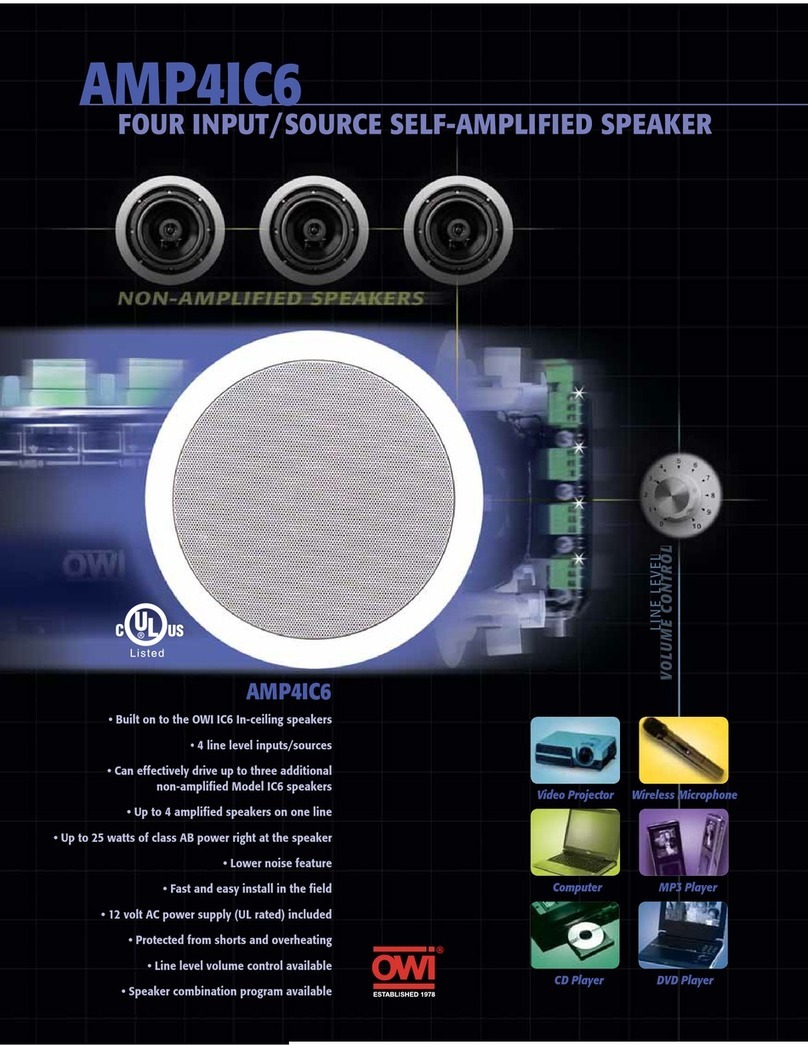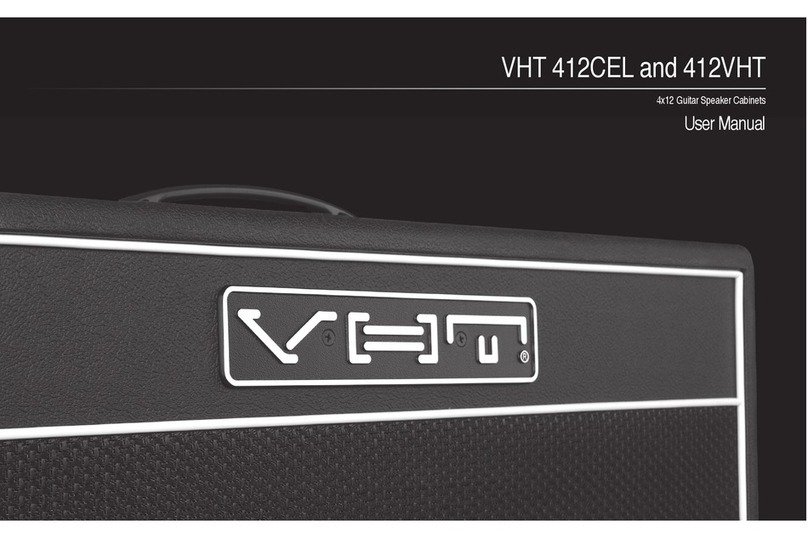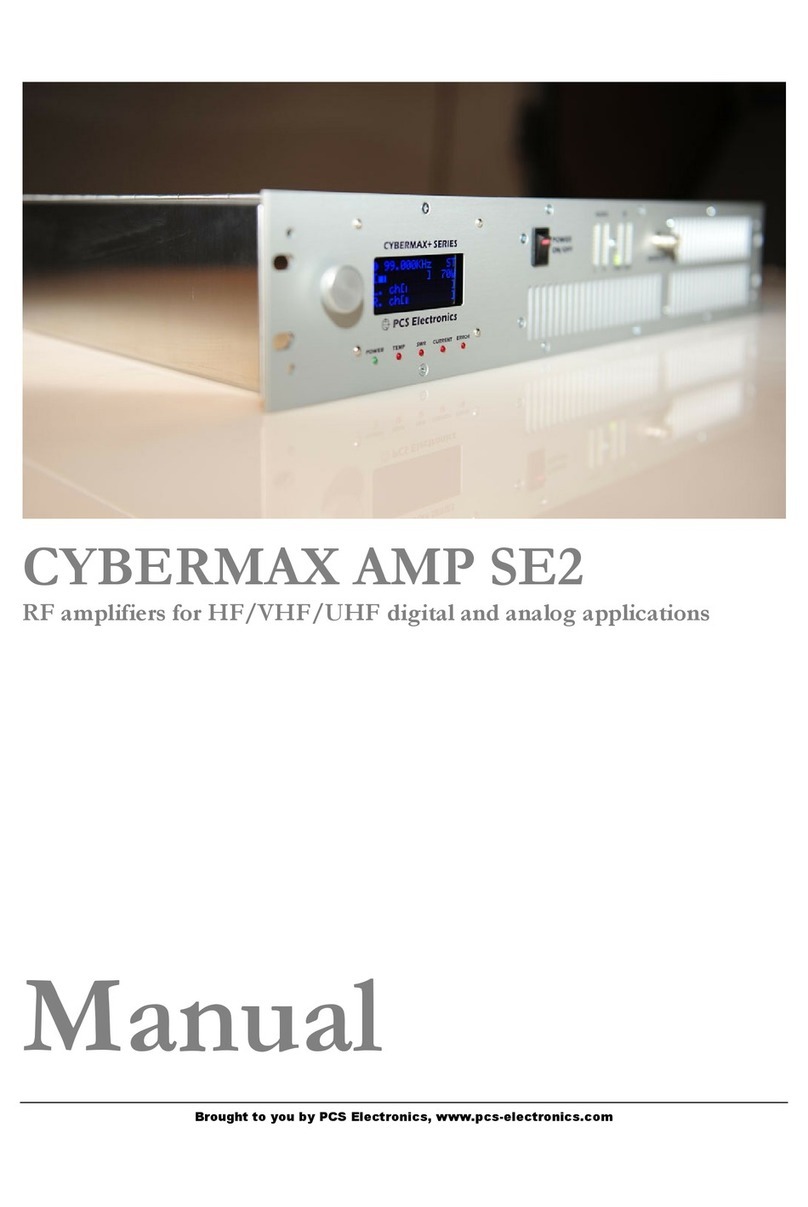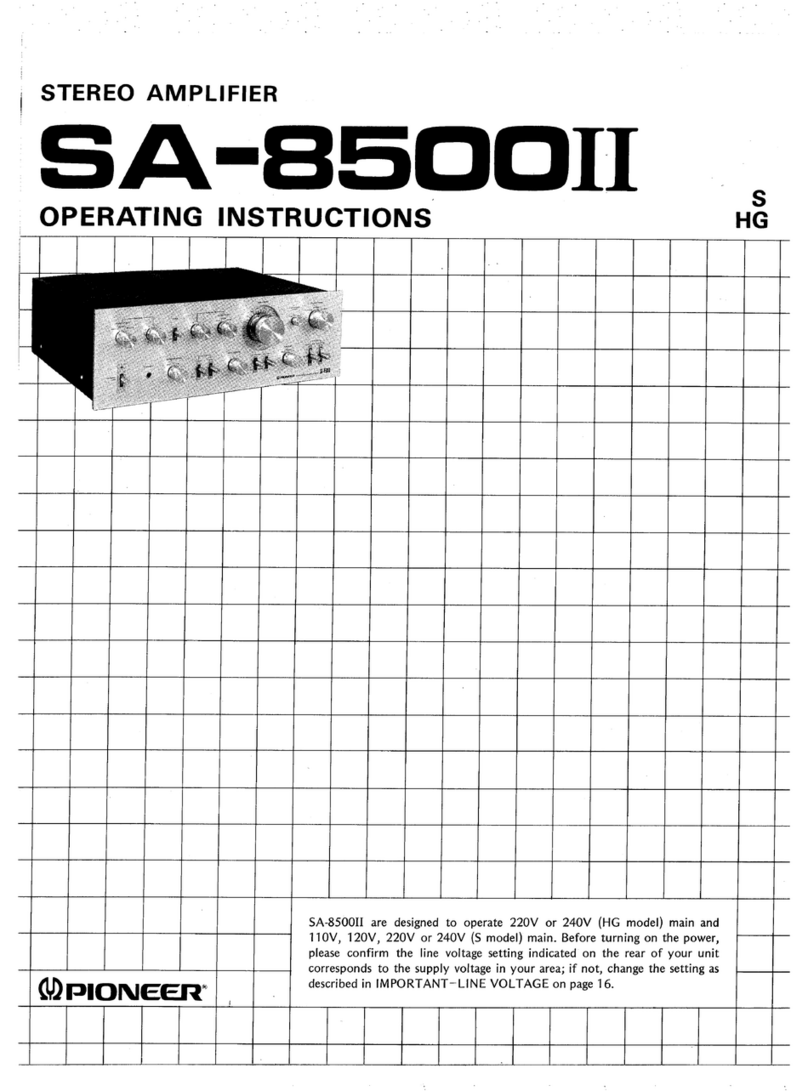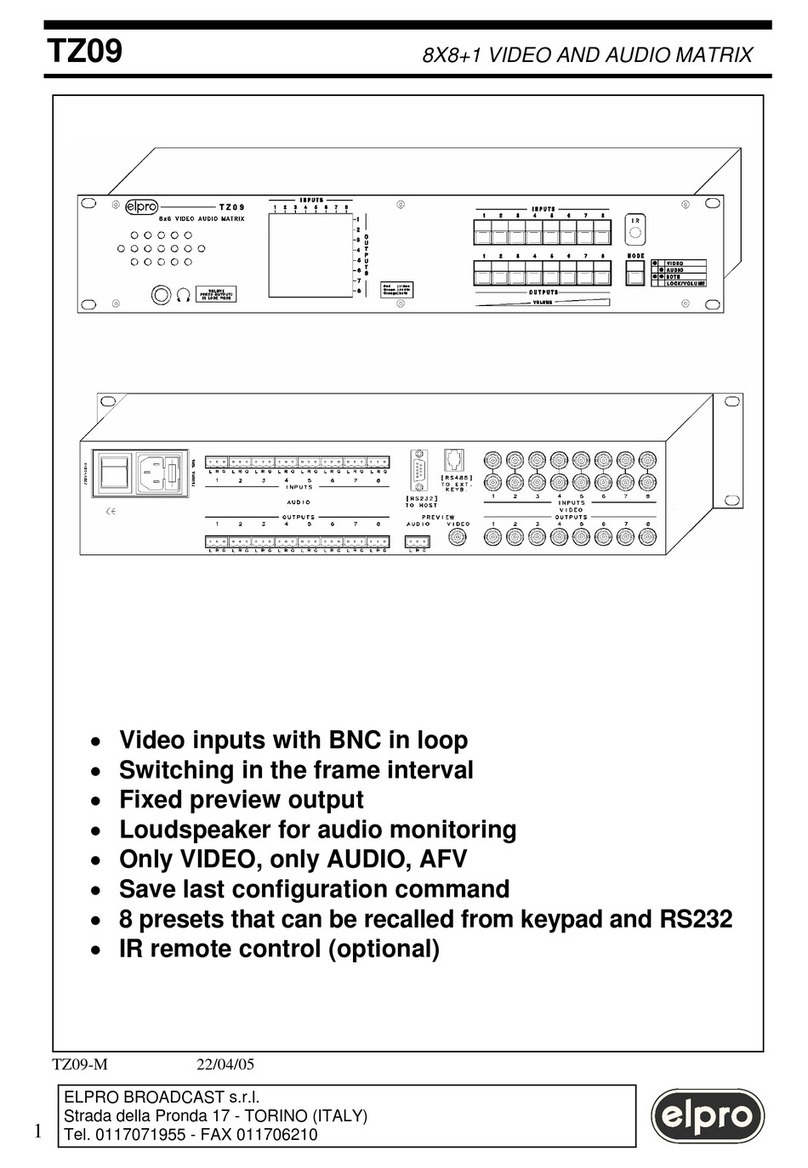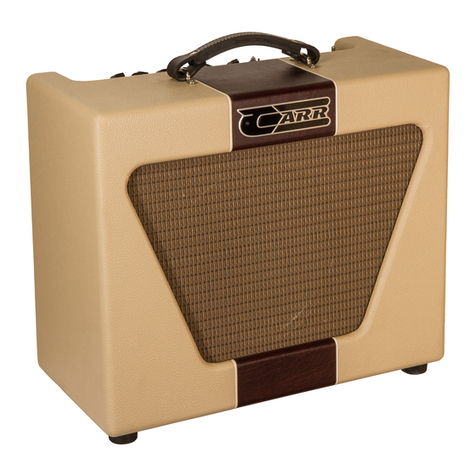Advanced Digital SimpleServo SS504 User manual

1
SimpleServo®
Digital Servo Amplifier
USER’S MANUAL
MODELS:
SS504 SS508
SS604 SS608

2
Copyright ©2001 by Advanced Digital Inc.
All rights reserved. No part of this manual may be reproduced or transmitted inany form without written
permission from Advanced Digital Inc. The information and technical data in this manual are subject to
change without notice. Advanced Digital Inc. and its Divisions make no warranty of any kind with respect to this
material, including, but not limited to, the implied warranties of its merchantability and fitness for a given
purpose. Advanced Digital Inc. and its Divisions assume no responsibility for any errors that may appear in this
manual and make no commitment to update or to keep current the information in this manual.
Advanced Digital, MotionView, SimpleServo, and all related indicia are either registered trademarks or
trademarks of Advanced Digital Incorporated in the United States and other countries.
Printed in the United States of America.

3
m
Safety Warnings
• The warning symbol shown at left denotes an important safety consideration. Please read this manual
carefully before performing any of the procedures contained herein. Failure to follow these instructions
may result in fire, severe injury, or fatality.
• Have a qualified electrical maintenance technician install, adjust and service this equipment. Follow the
National Electrical Code and all other applicable electrical and safety codes, including the provisions of
the Occupational Safety and Health Act (OSHA), when installing equipment.
• The question mark symbol shown at left denotes shortcuts, reminders, or additional information which
does not affect the safe operation of the drive.
• Reduce the chance of an electrical fire, shock, or explosion by proper grounding, over-current
protection, thermal protection, and enclosure. Follow sound maintenance procedures.
• It is possible for a drive to run at full speed as a result of a component failure. Please ensure that a
master switch has been placed in the AC line to stop the drive in an emergency.
• Circuit potentials are at 115 VAC or 230 VAC above earth ground. Avoid direct contact with the
printed circuit board or with circuit elements to prevent the risk of serious injury or fatality. Use a non-metallic
screwdriver for adjusting the calibration trimpots.
m

4
General Information
The Advanced Digital SimpleServo family of servo amplifiers is an economical solution to today’s
complex motion-control needs. The SimpleServo combines a Digital Signal Processor (DSP),
controller, heat sink and power supply in one standalone, DIN-rail mountable or panel-mounted unit.
The SimpleServo can be operated as a stand-alone unit or as a digital amplifier.
The SimpleServo controls brushless motors with a high switching (carrier) frequency for virtually silent
operation. Most servomotors used today require high precision control and a smooth, sinusoidally
commutated signal. An on-board DSP provides commutation by generating the three-phase sine
wave, using feedback information from an optical encoder.
The servo will accept feedback from an encoder that includes Hall sensor feedback information. It
accepts commands from a variety of sources, including analog voltage, PWM and internal reference
signals. The control will operate in current (torque) mode, velocity mode, or position (step and
direction) mode. Upon initial start up, the motor is commutated using the hall sensors—for the first
two or three mechanical degrees of motor rotation—to map the encoder; The hall-effect information is
unnecessary thereafter.
The SimpleServo’s built-in RS-232 serial communications port and servo control program,
MotionView™, make programming extremely simple. In fact, you could be up and running in less
than thirty minutes! Each SimpleServo unit is an amplifier, power supply, controller and heat sink
integrated into a single standalone package. The SimpleServo will only accept an encoder with Hall or
an encoder with hall-commutation tracks encoded on the feedback device.

5
Specifications
ELECTRICAL CHARACTERISTICS
Maximum Continuous Peak* Input Voltage
Continuous Phase Current Current (±10%, 50-60 Hz)
Drive Current (AC) (AC Amps) (AC Amps) (VAC)
SS504 6A 4 8 90 –240
SS604 6A 4 8 90 –240
SS508 12A 8 14 90 –240
SS608 12A 8 14 90 –240
Notes:
“-3P” = 3-phase input power models
Applies to all models:
AC Output Voltage Range (Sinusoidal, Three-Phase) 0–240 VAC RMS
Minimum Output Voltage Range 0 –340 VAC
Acceleration Time Range (Zero to Max Speed) 0 –6000 seconds
Deceleration Time Range (Max Speed to Zero) 0 –6000 seconds
Speed Regulation (typical) ± 0.5 RPM
Input Impedance (+REF to COM and +REF to -REF) 47 Kohms
Power Device Switching Frequency (sinusoidal commutation)16 KHz
Encoder power supply (max) +5 VDC @ 300 mA
Maximum encoder feedback frequency 3.0 MHz
ENVIRONMENT
Vibration
SS500 Series 0.1 G (all frequencies)
SS600 Series 0.5G max (20 –50 Hz)
0.1G max (>50 Hz)
Shock 1.0 g @10 m/sec
Ambient Operating Temperature Range 0 to 40ºC
Ambient Storage Temperature Range -10 to 70ºC
Humidity 5 –90% non-condensing
Altitude** 1500 m/5000 ft
**derate by 1% per 300m (1000 ft) above 1500m (5000 ft)

6
DIMENSIONS AND WEIGHT
Model SS504 SS604 SS508 SS608
Height (inches) 6.50 6.50 6.50 6.50
Width (inches) 2.58 3.38 3.58 4.38
Depth (inches) 7.50 7.50 7.50 7.50
Weight (lbs) 3.5 6.0 6.5 8.0
OPERATING MODES
Torque
Reference 0 ± 10 VDC or 0 to 10 VDC, scalable
Accuracy ± 0.01 amp
Current-Loop Bandwidth up to 2.5 kHz
Velocity
Reference 0 ± 10 VDC or 0 to 10 VDC
Accuracy ± 0.5 RPM
Velocity-Loop Bandwidth up to 300 Hz
Speed Range up to 8000:1
Position
Reference Step and direction signals or Master Encoder full quadrature
signal (software selectable).
Minimum Pulse Width 250 nanoseconds
Reference Max frequency 2 MHz
Position-Loop Bandwidth Up to200 Hz
Accuracy ±1 encoder count
CONNECTIONS
Serial Standard 9-pin D-shell
Encoder Feedback Standard 15-pin D-shell
I/O 15-pin removable terminal block or 25-pin D-shell
Controller Standard 25-pin D-shell
Power 8-pin removable terminal block
Windows® Software: MotionViewTM (Windows 95, 98, NT)

7
SS500 Series Dimensions
ALL DIMENSIONS IN INCHES [MILLIMETERS]
DIMENSION “A”
MODEL DIMENSION
SS504 2.58 [66] (NO
HEATSINK
NECESSARY)
SS508 3.58 [91]

8
SS604/SS608 Series Dimensions
DIMENSION “A”
MODEL DIMENSION
SS604 3.38 [86]
SS608 4.38 [111]
ALL DIMENSIONS IN INCHES [MILLIMETERS]

9
Suggested Clearance for Cooling Air Circulation (All Models)

10
m
Installation
Warning!
• The SimpleServo must be mounted vertically for safe operation at the maximum current rating.
• Printed circuit board components are sensitive to electrostatic fields. Avoid contact with the printed
circuit board directly. Hold the SimpleServo by the case only.
• Protect the control from dirt, filings, airborne particles, moisture, and accidental contact. Provide
sufficient room for access to the terminal block.
• Mount the control away from other heat sources. Operate within the specified ambient operating
temperature range. Additional cooling with an external fan may be recommended in certain
applications.
• Avoid excessive vibration to prevent intermittent connections.
• Do not disconnect any of the motor leads from the SimpleServo unless power is removed or the
control is disabled. Opening any one motor lead may cause failure.
• The DIN-rail mounting tab is designed to bear only the weight of the SimpleServo and heat sink.
Make sure enough slack exists in the wire routing to ensure that the cables do not tug or pull
downward against the DIN-rail mounting tab.
MOUNTING
Note
It may be necessary to add shock-absorbing “bumpers” to the back of the SS500.
Mount the SimpleServo vertically in the panel as shown in Figure 5.
1. Ensure that a 30 mm (1.2 inch) DIN rail is installed horizontally in the rear of the panel prior to
mounting the SS500.
2. Ensure that the upper mounting tab on the back of the SS500 is in the UP position.
3. Hook the SS500’S lower mounting tab under the DIN rail as shown in Figure 4a. The tab fit should
be snug.
4. Rotate the SS500 upward, flush against the DIN rail, ensuring that the lower mounting tab remains
engaged by the DIN rail.
5. Once the SS500 is flush against the DIN rail, push down on the mounting tab atop the drive (Figure
4b). The mounting tab will latch onto the top of the DIN rail.

11
m
Install the bumpers as follows:
1. Peel off the adhesive cover from the clear bumper. Apply to the DIN rail tab of the SimpleServo (the
moveable tab on the rear of the control that clamps onto the top of the DIN rail).
2. Mount the drive as indicated above.
3. Peel off the adhesive cover from the black bumper. Lift the bottom of the control (while it is still
clamped to the DIN rail) to open a slightly larger air gap between the SimpleServo and the enclosure.
Apply the black bumper to the back of the SimpleServo (the side facing the enclosure) approximately
one inch above the bottom. Release the drive. It should come to rest on the newly applied black
bumper.
WIRING
Warning!
Under no circumstances should power and logic leads be bundled together. Induced voltage can
cause unpredictable behavior in any electronic device, including motor controls.
• Use 18-28 AWG wire for reference and analog signal wiring. Use 12-16 AWG wire for AC line (L1
and L2) and motor (Phase U, V and W) wiring.
SHIELDING AND GROUNDING
Advanced Digital recommends the use of single-point grounding (SPG) for panel-mounted controls.
Serial grounding (a “daisy chain”) is not recommended. The SPG for all enclosures must be tied to
earth ground at the same point. The system ground and equipment grounds for all panel-mounted
enclosures must be individually connected to the SPG for that panel using 14 AWG (5.5 mm) or larger
wire. Refer to Figure 6 for wiring guidelines.
In order to minimize EMI, the chassis must be grounded to the mounting panel (Figure 6). Use 14
AWG (1.6 mm) or larger wire to join the enclosure to earth ground. A lockwasher must be installed
between the enclosure and ground terminal. To ensure maximum contact between the terminal and
enclosure, remove paint in a minimum radius of 0.25 in (6 mm) around the screw hole of the
enclosure.
Advanced Digital recommends the use of the special servo cables provided by Advanced Digital. If
you specify cables other than those provided by Advanced Digital, please make sure all cables are
shielded and properly grounded.
It may be necessary to earth ground the shielded cable (Figure 6). Ground the shield at the
SimpleServo end and at the motor end.
If the SimpleServo continues to pick up noise after grounding the shield, it may be necessary to add
AC line filtering devices and/or an output filter (between drive and servomotor).
EMI Protection
Electromagnetic interference (EMI) is an important concern for users of digital servo control systems.
EMI will cause control systems to behave in unexpected and sometimes dangerous ways. Therefore,
reducing EMI is of primary concern not only for servo control manufacturers such as Advanced Digital,
but the user as well. Proper shielding, grounding and installation practices are critical to EMI reduction.

12
Figure 6. Wiring guidelines
Enclosure
The panel in which the servo is mounted must be made of metal, and must be grounded using the
SPG method outlined above.
Proper wire routing inside the panel is critical; power and logic leads must be routed in different
avenues inside the panel .
If you use drives that output over 8 amps, you must ensure that the panel contains sufficient clearance
above and below for the cooling fan to circulate air. Refer to Figure 3 for minimum suggested cooling
air clearance.
LINE FILTERING
In addition to EMI/RFI safeguards inherent in the SimpleServo design, external filtering may be
required. High frequency energy can be coupled between the circuits via radiation or conduction. The
AC power wiring is one of the most important paths for both types of coupling mechanisms. There are
many AC line filter manufacturers whose filters can be successively integrated. Advanced Digital
recommends Schaffner filters based on our test results.
The following table shows a typical filter selection for SimpleServo drives.

13
m
Table 1. Line Filter Part Numbers
SimpleServo P/N Schaffner AC filter P/N
SS504/604 FN350-8
SS508 FN350-12
SS608 FN350-12
Line filters should be placed inside the shielded panel. Connect the filter to the incoming power lines
immediately after the safety mains and before any critical control components (Figure 6). Wire the AC
line filter as close as possible to the SimpleServo. If you add separate fuses, add them after the AC
line filter.
The ground connection from the filter must be wired to solid earth ground, not machine
ground. This is very important!
If the end-user is using a CE-approved motor, the AC filter combined with the recommended
SimpleServo motor and encoder cables, is all that is necessary to meet the EMC directives listed
herein. The end user must use the comparable filter (see table above), to comply with CE
specifications. The OEM may choose to provide alternative filtering that encompasses the
SimpleServo and other electronics within the same panel. The OEM has this liberty because CE is a
machinery directive.
HEAT SINKING
SimpleServos contain sufficient heat sinking in their basic configuration. There is no need for
additional heat sinking. However, drives that output more than 8 amps incorporate a heat sink cooling
fan; you must ensure that there is sufficient clearance for the cooling fan to circulate air (Figure 3). As
a minimum, you must allow an air gap of 1 inch above and below the drive.
LINE FUSING
External line fuses must be installed on all SimpleServos. Connect the external line fuse in series with
the AC line voltage input. Table 3 lists the recommended line fuse sizes. Use fast acting fuses rated
for 250 VAC or higher, and approximately 200% of the maximum phase current.
Table 2. Recommended Line Fuse Sizes.
Model AC Line Fuse Size
Number (AC Amps)
SSX04 15
SSX08 25

14
m
SIMPLESERVO CONNECTIONS
The standard servo control contains five connectors: two quick-connect terminal blocks and three
subminiature type “D” connectors. These connectors provide power, communications and external
feedback to the motor, servo control and host controller (Figure 8). Prefabricated cable assemblies
may be purchased from Advanced Digital to facilitate wiring the control, motor and host computer.
Contact your Advanced Digital sales representative for assistance.
Encoder feedback
An encoder needs to have power supplied to it. Both front-end controllers and the SimpleServo each
have a +5 VDC supply voltage that may be used to power the encoder. The SimpleServo contains
patent-pending automated switching circuitry which will power the encoder from a front-end controller
if it is present (through the ENC+ pin). If no supply voltage is present at the ENC+ pin, the Advanced
Digital servo will switch its internal power (+5 VDC supply) to the encoder.
Warning!
Use only +5 VDC encoders. Do not connect any other type of encoder to the SimpleServo reference
voltage terminals. When front-end position controller is used, it is critical that the +5 VDC supply on
the front-end controller NOT be connected to the +5 VDC supply on the SimpleServo.
NOTE: Advanced Digital recommends an encoder resolution of 2000 PPR or higher for optimum
performance.

15
EXTERNAL CONNECTORS
TB501 (Power, Motor and Fuse Connections)
NOTE: All conductors must be enclosed in one shield and jacket around them. The shield on the
amplifier end must be terminated at TB501 pin 8 (chassis ground); the other end should be properly
terminated at the motor shield. To satisfy CE requirements, Advanced Digital recommends that you
purchase SimpleServo cables for both the motor and AC line. Contact your Advanced Digital
representative for assistance.
TB501 is an 8-pin quick-connect terminal block used for motor, power and fuse connections. Refer to
Table 3 for connector pin assignments. Where referenced in the table below, refer to Connector Wiring
Notes for more information.
Wire size
If the current draw is less than 8 amps: Use 16 AWG (1.0 mm) or 14 AWG (1.6 mm) wire
If the current draw is greater than 8 amps but less than 12 amps: Use 14 AWG (1.6 mm) wire or 12
AWG (2.6 mm).
If the current draw is greater than 12 amps: Use 12 AWG (2.6 mm).
Table 3. TB501 Pin Assignments
Terminal Block
Pin # Name Function
1W (T) Motor Power Out
2V (S) Motor Power Out
3U (R) Motor Power Out
4DUMP+ Dump resistor out
5DUMP-Dump resistor out
6L2 AC Power In
7L1 AC Power In
8GND Chassis Ground

16
TB502 (Analog/Digital I/O Terminal Block)
TB502 is a 15-pin quick-connect terminal block used for analog and digital I/O functions in standalone
mode. Refer to Table 4 for connector pin assignments.
Table 4. TB502 Pin Assignments
Terminal Block
Pin # Name Function
1-Vcc -Vcc (5mA)
2REF-Negative reference input (differential)
3REF+ Positive reference input (differential)
4+Vcc -Vcc (5mA)
5AGND Analog ground (Attach shield from signal source here)
6MA+/Step+ Step+ (or master encoder channel A+) input4
7MA-/Step-Step-(or master encoder channel A-) input4
8MB+/Dir+ DIR+ (or master encoder channel B+) input
9MB-/Dir-DIR-(or master encoder channel B-) input
10 Analog Output Programmable analog output
11 AUX INPUT Programmable digital input
12 EN Enable Input4
13 OUT_RDY Ready output O.C.
14 OUT_AUX Programmable Output O.C.
15 GND Logic common

17
TB504 (Motor Feedback Input from Motor)
TB504 is a 15-pin DB connector that contains connections for Hall effect sensors and encoder
feedback. Refer to Table 5 for connector pin assignments.
All conductors must be enclosed in one shield and jacket around them. Advanced Digital recommends
that each and every pair (for example, EA+ and EA-) be twisted. In order to satisfy CE requirements,
Advanced Digital recommends using OEM cable. Contact your Advanced Digital representative for
assistance.
The servo routes encoder feedback through TB504 to TB506. Encoder channel A on TB504, for
example, is routed to the encoder channel A pin on TB506 inside the Advanced Digital servo. The
encoder and Hall sensors from the motor must not be wired to the 25-pin receptacle on the Advanced
Digital servo, even though there are pins on this receptacle which reference them. The encoder and
Hall sensors from the motor must be wired to the 15-pin connector.
Table 5. TB504 Pin Assignments
"D"-Sub
Pin # Name Function1
1EA+ Encoder Channel A
2EA-Encoder Channel A Not2
3EB+ Encoder Channel B
4EB-Encoder Channel B Not
5EZ+ Encoder Channel Z
6EZ-Encoder Channel Z Not
7GND Drive Common/Encoder Ground
8SHLD Shield
9PWR Encoder supply (+5VDC)
10 N.C Do not connect
11 HA Hall Sensor A
12 HB Hall Sensor B
13 HC Hall Sensor C
14 N.C Do not connect
15 N.C Do not connect

18
m
TB505 (Serial Communications Port input to Servo)
TB505 is a 9-pin DB connector that is used to communicate with a host computer.
All levels must be RS-232C compliant.
Table 6. TB505 Pin Assignments
"D"-Sub
Pin # Name Function
1No Connection
2TX RS232 TX
3RX RS232 RX
4No Connection
5GND Common
6No Connection
7No Connection
8No Connection
9Reserved
Warning!
If you purchase serial cables from a third party, you must use pass-through cable, not Null-Modem
(not crossover).

19
TB506 (Controller Interface)
TB506 is a 25-pin DB connector for interfacing to front-end controllers. Advanced Digital strongly
recommends you use OEM cables to aid in satisfying CE requirements. Contact your Advanced Digital
representative for assistance.
Table 7. TB506 Pin Assignments
"D"-Sub
Pin # Name Function1, 4
1EA+ Encoder Channel A
2EA-Encoder Channel A Not2
3EB+ Encoder Channel B
4EB-Encoder Channel B Not
5EZ+ Encoder Channel Z
6EZ-Encoder Channel Z Not
7GND Drive Common
8SHLD Shield
9ENC+ Positive Terminal of Encoder Power (+)3
10 N/C Spare
11 MA+/Step+ Master Encoder A+ / Step input+5
12 MA-/Step-Master Encoder A-/ Step input-5
13 MB+/Dir+ Master Encoder B+ / Direction input +
14 MB-/Dir-Master Encoder B-/ Direction input -
15 READY Output Ready (Output from Servo)
16 AUX Programmable Output (Output from Servo)
17 ENABLE+ Enable Input +4
18 ENABLE-Enable Input -4
19 AUX-C (OC) Programmable output OC. Collector
20 AUX-E (OC) Programmable output OC Emitter
21 EXTPOWER +5 V (20ma max)
22 GND Drive Common
23 REF+ Positive (+) of Analog Reference Signal Input
24 REF -Negative (-) of Analog Reference Signal Input
25 Analog Ground Reference Signal Ground/Analog Shield

20
m
CONNECTORS AND WIRING NOTES
Note 1
Each of the encoder output pins on TB506 is for pass-through purposes. The encoder channel A pin on
TB504, for example, is routed to the encoder channel A pin on TB506 inside the Advanced Digital
servo. If you require encoder information, wire your controller to TB506. The encoder and Hall sensor
feedback from the motor must be wired to the 15-pin Type D receptacle (connector) through the
feedback cable.
Note 2
The complement of A is sometimes written as not A. The B, C and Z encoder channels are annotated
in a similar fashion.
Note 3
Warning!
Do not connect the +5 VDC supply on the front-end controller to the +5 VDC supply on the Advanced
Digital servo. This will result in damage to the SimpleServo.
The encoder needs to have power supplied to it. A front-end controller, as well as the Advanced Digital
servo, has a +5 VDC supply voltage that may be used to power the encoder. The Advanced Digital
servo contains patent-pending automated switching circuitry which will power the encoder from a front-
end controller if it is present (through the ENC+ pin). If no supply voltage is present at the ENC+ pin, the
Advanced Digital servo will switch its internal power (+5 VDC supply) to the encoder.
Note 4
The enable (EN) pin, TB502 pin 9 or TB506 pin 17/18, must be wired to one of the output terminals on
the front-end controller, i.e., if the controller is present, it must supervise the enable function on the
Advanced Digital servo. The SimpleServo will accept open-collector outputs for use as a switch, TTL or
CMOS outputs (5V) programmed for active low operation.
Note 5
An external pulse train signal (for “step”) supplied by an external device, such as a PLC or stepper
indexer, can control the speed and position of the servomotor. The speed of the motor is controlled by
the frequency of the step signal, while the number of pulses that are supplied to the SimpleServo
determines the position of the servomotor. “DIR” input controls direction of the motion.
This manual suits for next models
3
Table of contents
